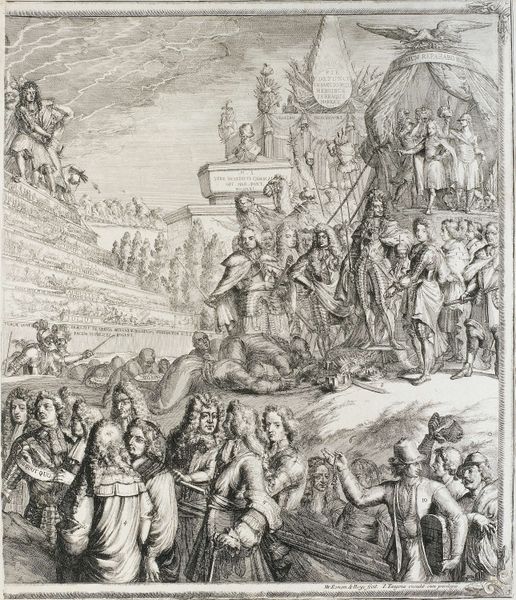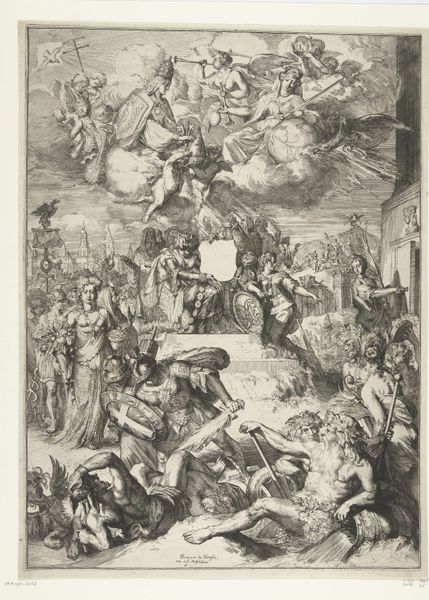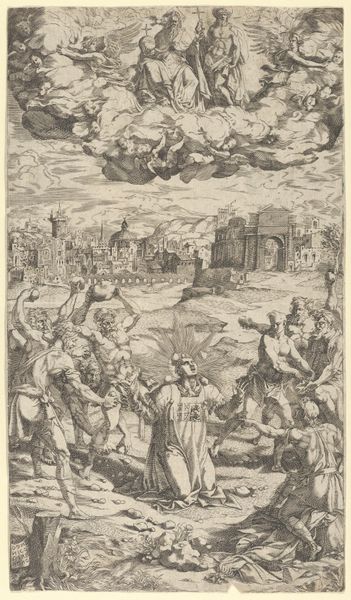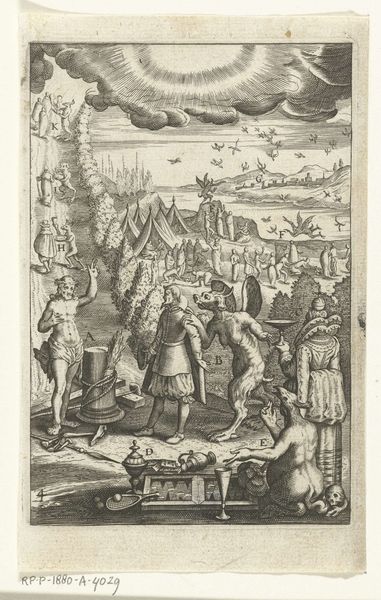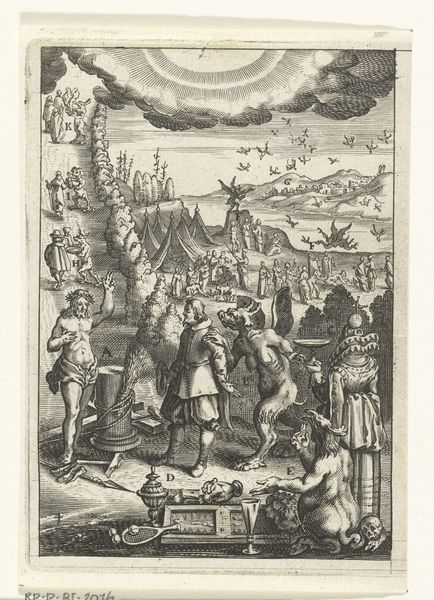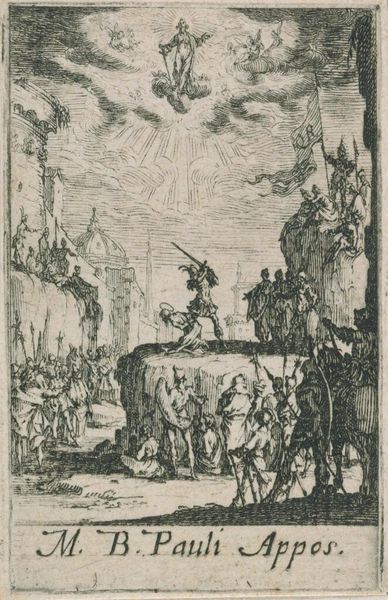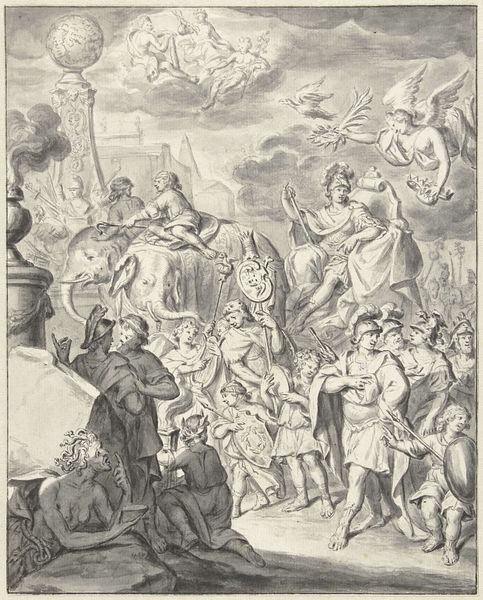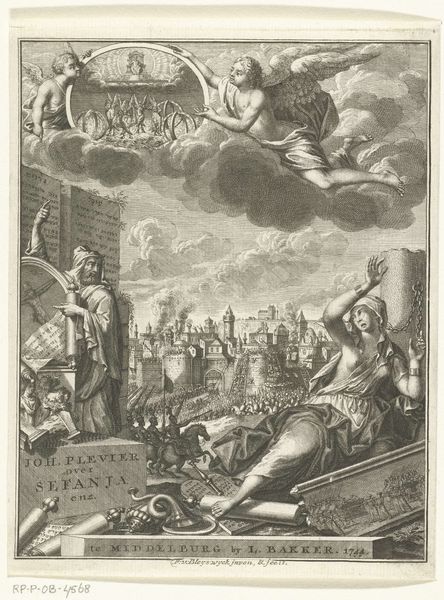
print, metal, engraving
# print
#
metal
#
landscape
#
figuration
#
history-painting
#
northern-renaissance
#
engraving
Dimensions: height 362 mm, width 242 mm
Copyright: Rijks Museum: Open Domain
Editor: Here we have "Overtocht over de Jordaan", or "Crossing the Jordan", an engraving on metal from the late 16th century by Wierix. It's incredibly detailed! What I find most striking is how the crowd seems to surge forward, despite the calm landscape. How do you interpret this work? Curator: It's crucial to situate this piece within the sociopolitical context of the Northern Renaissance and the Reformation. This scene, depicting the Israelites crossing into the Promised Land, held immense symbolic weight. We must consider the rise of Protestantism and challenges to established power. How do you think viewers at the time might have understood the idea of crossing a boundary into a new territory, led by faith? Editor: I guess they might see themselves reflected in that journey, a transition into a new religious or political landscape? Maybe with a sense of hope or even anxiety? Curator: Precisely. This work speaks to a longing for liberation, not just spiritually, but also perhaps from oppressive social structures. Look at the figures carrying stones from the river; what labor do you imagine went into transporting the stones in that difficult environment, what class of people, what gender? This artwork is a visual articulation of identity and resistance, reflecting both religious zeal and perhaps even a quiet yearning for societal change, embedded in a narrative of migration, resettlement, and freedom. What about the act of claiming land? What consequences do you see there? Editor: It's fascinating how one image can reveal so much about the anxieties and hopes of its time. I hadn't considered the nuances of the political climate influencing the artwork's interpretation, I thought the reference was purely religious. Curator: Exactly! Art is never created in a vacuum, and by looking through an intersectional lens, we uncover these important threads of history, power, and representation that are not readily apparent on the surface. I will think more deeply now, about the way the figures in the foreground occupy the frame and how that influences the story, as well as think through what historical context I may have overlooked in my original reaction.
Comments
No comments
Be the first to comment and join the conversation on the ultimate creative platform.

